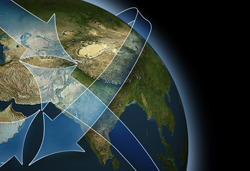Getting ocean modellers on the same wavelength
The oceans play an important role in the storage and cycling of carbon. Thus, any attempts to model the impact of increasing carbon dioxide emissions on the Earth's climate must take the oceans into account. While a number of different ocean models exist, the results they produce often differ from one another. The Energy, Environment and Sustainable Development Programme funded a major research project entitled NOCES, which brought together ocean modelling experts from across Europe. The project was coordinated by Le Laboratoire des Sciences du Climat et l'Environnement (LSCE) in France. One of their key contributions was the creation of an ocean modelling protocol. The aim of the protocol was to standardise the way in which the different research groups ran their models when investigating inter-annual variability in carbon dioxide fluxes. For example, everyone was required to apply the same boundary conditions, namely reanalysis data from the National Centers for Environmental Prediction (NCEP) for the period 1948 to 2001. Another important component of the protocol was the inclusion of common model code addressing the carbon cycle. Finally, upon completion of the simulations, specific guidance was provided regarding how to format the model output in order to facilitate inter-comparison between research institutes. The protocol has been made available online at: http://www.ipsl.jussieu.fr/projets/NOCES It is hoped that it may also be applied during future research projects addressing the topic of inter-annual and decadal variability.



